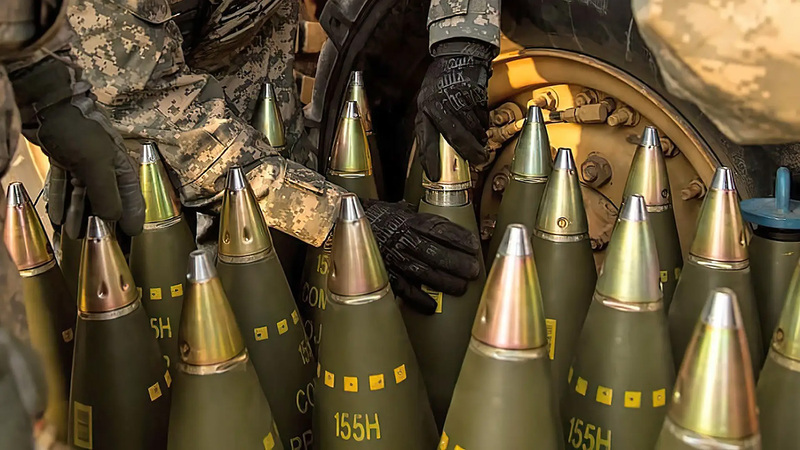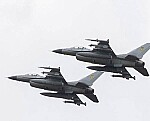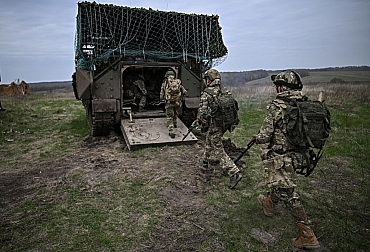Zelensky did not bring an early "Christmas present" from the USA. New weapons for Ukraine still blocked by Congress
Before Christmas, Ukrainian President Volodymyr Zelensky decided to personally persuade US lawmakers to approve another huge military aid package for the Russian-occupied country. In vain. Instead, he learned that Congressional approval of a new USD 61 billion arms shipment is stalled and still in sight. US President Joe Biden then pledged to deliver some $200 million worth of additional equipment from another part of the budget. However, even the stockpiles from this fund are running thin and, according to the Pentagon, the warehouses themselves have reached zero, leaving almost nothing to give Kiev before winter.
Volodymyr Zelensky's trip to the United States was not timed by accident. After all, US Republicans are still not agreeing to the terms of approval of the giant arms and ammunition package and are making it conditional on national demands regarding the security of the southern border and the fight against migration. "It's virtually impossible, even if we reach an agreement, to be able to iron out the details, to pass it in the Senate and the House before Christmas," Senate GOP leader Mitch McConnell told reporters in the US Capitol after Zelensky's visit, according to Reuters. "There will be no deal until Joe Biden and the Republicans come to an agreement. Without it, there is no deal," McConnell said.
"We have to prove him wrong. If we don't stop Putin, he won't give up," US President Joe Biden commented on the Oval Office meeting towards his domestic political rivals, according to Reuters. Volodymyr Zelensky then reiterated his thanks during the meeting, stressing the importance of Western support. "Thanks to Ukraine's success, success in defense, other European states are protected from Russian aggression," Zelensky told Biden before the closed-door meeting.
Although the meeting ultimately failed to produce the early Christmas present of approving the bulk of the planned military aid for Ukraine's defenders, Zelensky did return to the war-torn country with some positive news. "The United States announces a new package of weapons and equipment to support the Ukrainian people in defending their country and their freedom against Russian aggression. This package provides up to $200 million in weapons and equipment under previously approved disbursement funds for Ukraine," reads an official statement from U.S. Secretary of State Antony Blinken. "Items provided in today's package include air defense ammunition, individual air defense system components, additional ammunition for high mobility artillery rocket systems, artillery ammunition (including 155mm and 105mm caliber ammunition), high velocity anti-radiation missiles, anti-tank ammunition, small arms ammunition, demolition packages, HESCO barriers and spare parts, other ancillary equipment, services, training and transportation," Blinken listed.

From that exhaustive list, it may seem like there is too much help. However, it is gradually running out, or rather will run out, unless Ukraine's much-anticipated $61.4 billion overall framework package is approved by the US Congress. Moreover, even the latest announced aid to Ukraine, worth $200 million, is half the size of previous sub-packages (worth $400 million and $500 million respectively) and may seem a drop in the ocean in the overall scheme of things.
President Biden can afford to distribute these smaller sums because of the dual nature of the funding for military aid to Ukraine. The first is the so-called Presidential Disbursement Authority (PDA), which allows weapons to be delivered directly from Pentagon warehouses; the second is the Ukraine Security Assistance Initiative (USAI) program, which makes purchases under long-term arms contracts. However, both sources are now almost empty or have been completely exhausted by USAI, which is currently awaiting further congressional approval, and there is now $4.4 billion left in the PDA after recalculating previous acquisitions of US equipment by Ukraine, which was originally supposed to be overvalued on paper. And even that budget is getting thinner as the cuts proceed. In the 21 months since the Russian invasion, the United States has sent a total of an astonishing $111 billion in arms to Ukraine.
"So clearly, as we get closer to exhausting the remaining funds, and the question is whether we're going to exceed that and certainly retain the ability to spend the full $4.4 billion, we're also starting to get closer to having to make a decision about our own readiness and ability to continue to support Ukraine the way it needs to be supported on the battlefield," Pentagon spokesman Maj. Gen. Patrick S. Ryder commented. "So again, that's why we're calling on Congress to pass this amendment as quickly as possible," Ryder concluded his speech in response to the Republican Party's blocking of the package as well as the lack of its own supplies.
The most demanded and commonly used artillery ammunition is 155mm caliber (NATO standard), which the Ukrainians use in such things as M777 howitzers. The U.S. military has already called on the manufacturer of this scarce ammunition, the Scranton Army Ammunition Plant in Pennsylvania, to produce more of it, not only for the Ukrainians but also to replenish its own stocks in case of combat need.








